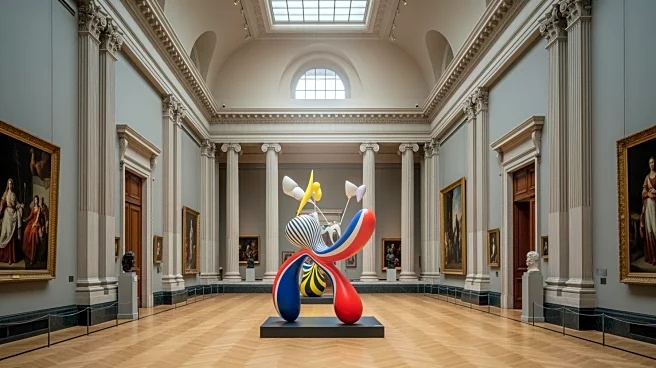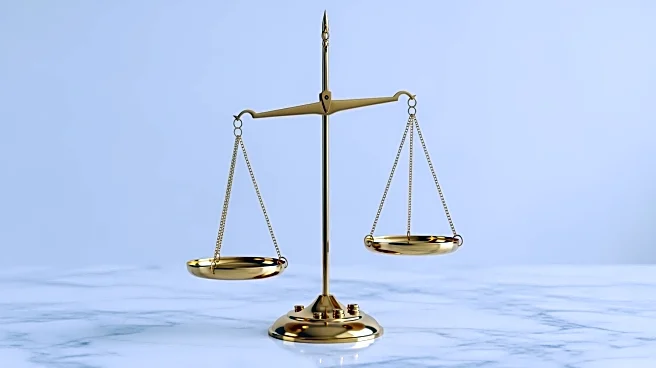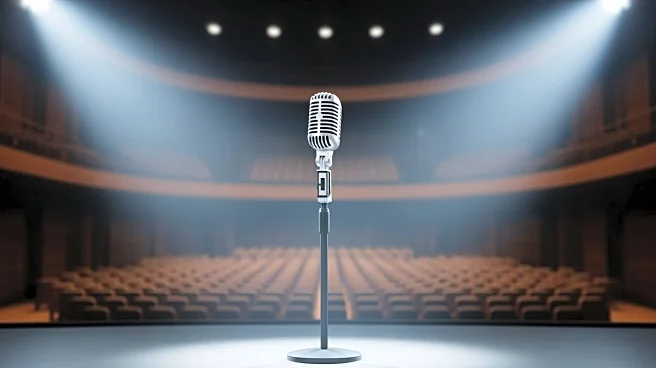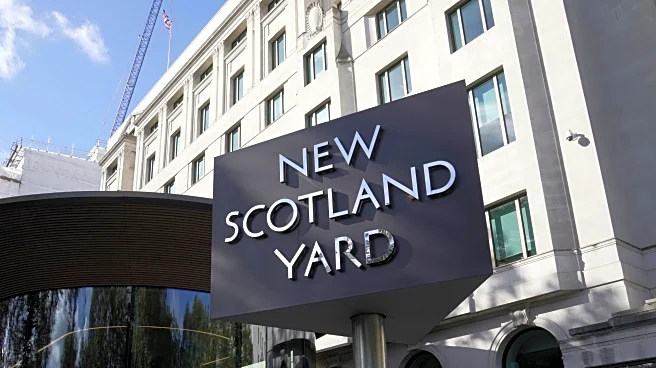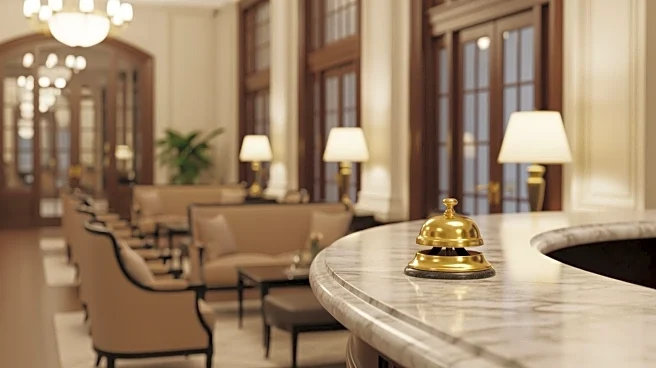What's Happening?
The National Gallery, under the leadership of Gabriele Finaldi, is undergoing a significant transformation in its collecting criteria. Traditionally focused on historic art up to around 1900, the gallery
is now expanding its collection to include modern and contemporary art up to the present day. This shift aims to bridge the gap with the Tate, which has been the primary institution for British art from the 19th century onwards. The change reflects a broader trend among museums to adapt to contemporary art practices and audiences. This move has sparked a debate between the National Gallery and the Tate, as both institutions will now compete for similar audiences, funding, and artworks.
Why It's Important?
The expansion of the National Gallery's collection to include modern and contemporary art has significant implications for the art world in the UK. It challenges the long-standing division of roles between the National Gallery and the Tate, potentially leading to increased competition for resources and visitors. This move could enhance the National Gallery's prestige and influence, as it broadens its appeal to a wider audience interested in contemporary art. However, it also raises concerns about the duplication of efforts and resources, as both institutions are located in close proximity in central London. The decision may prompt a reevaluation of the roles and responsibilities of national art institutions in the UK.
What's Next?
The National Gallery's decision to expand its collection criteria is likely to lead to further discussions and negotiations with the Tate and other stakeholders in the art community. The government may need to intervene to address the potential overlap and competition between these two major institutions. There is also the possibility of increased collaboration or partnerships between the National Gallery and the Tate to ensure that both institutions can coexist and thrive without undermining each other's missions. The outcome of these discussions could shape the future landscape of national art collections in the UK.
Beyond the Headlines
The decision to expand the National Gallery's collection to include modern and contemporary art raises broader questions about the role of national museums in preserving and promoting cultural heritage. It highlights the need for these institutions to adapt to changing artistic practices and audience expectations while maintaining their historical missions. The move also underscores the importance of strategic planning and collaboration among cultural institutions to maximize their impact and reach. As the art world continues to evolve, national museums must find ways to balance tradition with innovation to remain relevant and engaging to diverse audiences.
